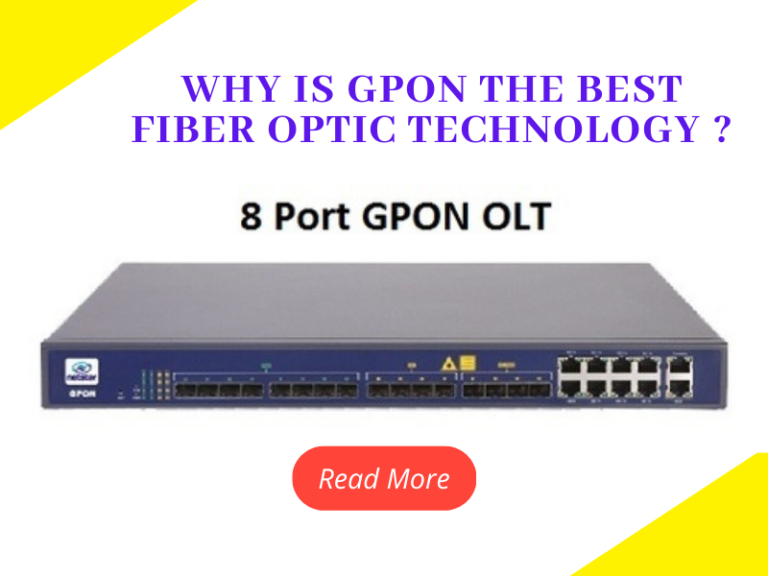
Why is GPON the Best Fiber-Optic Technology?
Fiber optic technology offers several well-known advantages over electrical and RF-transmission. The optical cables are very high in bandwidth. Its maintenance is low and the thin cables can be easily packed. It includes active optical networks (AON) as well as passive optical networks (PON). In PON, the main options are BPON (Broadband passive optical network), GPON (Gigabit passive optical network), and EPON (Ethernet passive optical network).
GPON
GPON is a point-to-multipoint access network. The main feature of GPON is that it uses passive splitters in the fiber distribution network, enabling one single feeding fiber from the provider to serve multiple homes and small businesses.
The downstream capacity of GPON is 2.488 Gb/s and the upstream capacity of 1.244 Gbp/s that is shared among users. Encryption is used to keep each other’s data secure and private from the users. Although some other technologies could provide fiber to the home, passive optical networks (PONs) but GPON offers the fastest speed of the current and this is why it is considered as the strongest candidate for widespread deployments.
GPON vs Other Optical Technologies
AON vs. PON
Active optical networks use electrically powered switching rather passive splitters. AON offers a greater range as much as 70 km from the central switch to an Ethernet device. Its costs are more nearly proportional to the number of users, so there’s less need to optimize end-user groupings.
GPON carries QoS features to keep latency down but an active network allocates bandwidth more effectively and provides better latency when the user load is high. Since the switches can report points of failure it is very easy to locate faults in the active networks.
AON has higher power consumption and active components are more prone to failure than passive ones. The costs and maintenance requirements of AON are higher and it also doesn’t support the RF overlays.
Read more: How Gpon Works – Gigabyte Passive Optical Network
BPON, EPON, and GPON
The main competition in PON is between EPON and GPON. BPON networks are still around and will be for a long time. BPON is slower than GPON and gives no advantages to compensate. Thus, it’s simply a matter of how long it will take to replace all the existing installations.
EPON is sometimes known as GEPON (Gigabit EPON).
EPON and GPON both are available in 10G versions but the architectures are noticeably different.
GPON uses two different types of encapsulation. It uses GPON Encapsulation Mode, or GEM to provide frame-oriented service. In addition, it uses ATM encapsulation for when working in an ATM network rather than Ethernet. EPON does not add any encapsulation but it treats everything as Ethernet data. It is a subject of ongoing debate whether GPON is more flexible or just adds complexity.
Thus, choosing between GPON and EPON is difficult. GPON has ATM compatibility, better data speeds, and better QoS features while EPON is more economical and treats Ethernet natively.
Conclusion
Fiber connections allow greater data speeds and open new business opportunities. The questions are when to upgrade and which technology to use. With passive optical networks, GPON and EPON are the leading choices. Each approach has its advantages. Therefore careful research and planning are needed to decide which will provide greater benefits.
If you have any doubts or queries, feel free to contact us.

